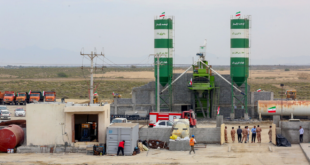 Iran’s Supreme National Security Council (SNSC) Undersecretary Javad Vaeedi and International Atomic Energy Agency (IAEA) deputy Director General Ollie Heinonen continued their talks about Iran’s P1 and P2 centrifuges here in Tehran on Wednesday. The two sides started this new round of talks with a four-hour-long meeting on Tuesday.
Iran’s Supreme National Security Council (SNSC) Undersecretary Javad Vaeedi and International Atomic Energy Agency (IAEA) deputy Director General Ollie Heinonen continued their talks about Iran’s P1 and P2 centrifuges here in Tehran on Wednesday. The two sides started this new round of talks with a four-hour-long meeting on Tuesday.
Earlier an informed source told FNA that the results of the current talks between Iranian and IAEA experts will be announced late October.
The source told FNA here on Wednesday that the two delegations would also continue their talks on Thursday.
He further described the talks between Tehran and the UN nuclear watchdog as “successful”, but declined to reveal the contents of the talks.
Meantime, the source underlined that the two sides are through with the discussions about the source(s) of the uranium traces left on Iran’s centrifuges, saying that experts are now dealing with other issues in relation to the centrifuges.
During the three-day meeting, the Iranian delegation is due to provide responses for a series of questions about its P1 and P2 centrifuges.
Talks on Iran’s centrifuge machines started on September 25 and 26, but the two sides refrained from revealing the contents of their meetings.
In these meetings, the Iranian delegation is headed by the Supreme National Security Council (SNSC) Undersecretary Javad Vaeedi, while the IAEA team is presided by the IAEA deputy Director General Ollie Heinonen.
Similar to previous rounds, Heinonen is accompanied by IAEA director for foreign relations and policy making, IAEA regional director for safeguards, and IAEA’s legal advisor while Vaeedi is assisted by deputy chief of Iran’s Atomic Energy Organization Mohammad Saeedi and Iran’s permanent envoy to the IAEA Ali Asghar Soltanieh.
The talks are considered as a further step by Iran to build more confidence after it explained in written about the origin of uranium traces on its centrifuges last month.
Tehran also allowed IAEA inspectors in August to revisit a heavy-water reactor under construction outside Arak, central Iran.
The visit to Arak nuclear reactor was arranged as a result of a recent agreement between Iran and the UN nuclear watchdog. The two sides have recently signed an agreement on resolving the remaining issues about Iran’s past nuclear activities. The two sides have so far attended several rounds of talks which both have described as “constructive”.
The talks between Iran and the IAEA followed a groundbreaking agreement gained during a June meeting between Iran’s chief nuclear negotiator and Supreme National Security Council (SNSC) Secretary Ali Larijani and IAEA Director General Mohammad ElBaradei in Vienna.
According to Iran-IAEA agreement, the UN nuclear watchdog raises all its questions on the basis of a premeditated schedule, and Iran should provide the required answer according to the same time-table.
Once they are through with the aforementioned action plan, the two sides have agreed to find a proper way to resolve the differences about the implementation of the nuclear safeguards in Iran.
The plan has vexed Western powers by allowing Iran to answer questions one by one according to a timeline while leaving untouched its uranium-enrichment program.
It has also wrong-footed a US-led push to rein in Iran by eroding European support for, and stiffening Russian resistance to, tougher UN sanctions. Iran won the reprieve by threatening to cut off the IAEA if pressure intensifies.
Talks between Iran and the IAEA are continued under such conditions that France has voiced strong support for the US efforts to impose a third set of sanctions on Iran.
IAEA chief Mohamed ElBaradei last month praised Iran’s cooperation with the agency as a significant step, but urged Tehran to answer all questions before the end of the year.
Iran has vowed to carry on its uranium enrichment, insisting its program is peaceful and geared solely toward producing electricity. The United States and key Western allies accuse Tehran of covertly trying to build a nuclear weapon, but they have never presented any corroborative evidence to substantiate their allegations.
The UN Security Council has already slapped two sets of sanctions, mostly economic and mainly targeting Iran’s nuclear and missile programs.
Iran has rejected both resolutions as illegal, saying it won’t give up its Non-Proliferation Treaty (NPT) right to enrich uranium and produce nuclear fuel.
In talks with Tehran, the IAEA deputy director general for safeguards, Ollie Heinonen is always accompanied by IAEA director for foreign relations and policy making, IAEA regional director for safeguards, and IAEA’s legal advisor.
Inclusion of technical, legal and political officials in the IAEA delegation reveals that the two sides strive to solve their problems from different aspects.
While West has always sought to politicize Iran’s nuclear issue, Tehran insists that questions about its nuclear programs and activities are technical and legal in nature and should, thus, be verified by the IAEA and not by the UN Security Council.
 Eurasia Press & News
Eurasia Press & News



